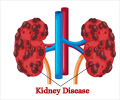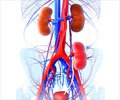Nuclear medicine enables non-invasive detection of kidney transplant infection using positron emission tomography/magnetic resonance imaging (PET/MRI).
- Nuclear medicine based test may enable non-invasive detection of kidney transplant infection.
- This test enables direct visualization of infiltrating leukocytes in renal allografts.
- A combination of positron emission tomography/magnetic resonance imaging (PET/MRI) and nuclear medicine is used in the test.
A novel nuclear medicine test that can determine whether a kidney transplant patient has developed an infection in the transplanted tissue has been developed by a research team. The study utilizes positron emission tomography/magnetic resonance imaging (PET/MRI) to develop a non-invasive detection of kidney transplant infection. Complicated urinary tract infections (UTIs) occur frequently in patients after kidney transplantation due to suppression of the immune system and may lead to transplant failure or sepsis. Detecting the source and extent of infection--especially whether the transplanted kidney (allograft) is involved--without further invasive procedures can be challenging.
Direct visualization of leukocytes in kidney
"Direct visualization of infiltrating leukocytes in renal allografts in the context of kidney infection has not been done before using PET," explains Thorsten Derlin, MD, Department of Nuclear Medicine, Hannover Medical School, Hannover, Germany. "Other imaging methods have not been very useful in the past for diagnosing renal infection, and biopsy may have complications, including bleeding."
For the study, 13 kidney transplant recipients with complicated UTIs underwent PET with the CXCR4-ligand 68Ga-Pentixafor and diffusion-weighted MRI. The combined PET/MRI detected acute infection in the transplanted kidneys of 9 patients and lowered UTI/non-urological infections in the remaining 4 patients.
Combination of nuclear medicine with PET/MRI
Combined CXCR4-targeted positron emission tomography/magnetic resonance imaging (PET/MR) imaging with 68Ga-Pentixafor, therefore, shows strong potential for noninvasive detection of leukocytes in kidney transplants. This novel methodology may also refine the characterization of infectious and inflammatory kidney diseases and may serve as a platform for future clinical studies targeting transplanted tissue (allograft) infection.
"This work establishes CXCR4-targeted PET as a novel approach for imaging of infection, and it strengthens the role of nuclear medicine for renal imaging," Derlin states. "It demonstrates the potential of integrating state-of-the art imaging approaches--i.e., diffusion-weighted MRI and novel, highly specific PET tracers--for a comprehensive assessment of kidney disease and has the potential to be translated into other settings of difficult-to-diagnose infections, such as cholangitis in transplanted patients and bone infections."
- Thorsten Derlin, Faikah Gueler et al. Integrating MRI and Chemokine Receptor CXCR4-Targeted PET for Detection of Leukocyte Infiltration in Complicated Urinary Tract Infections After Kidney Transplantation, Journal of Nuclear Medicine doi: 10.2967/jnumed.117.193037
















